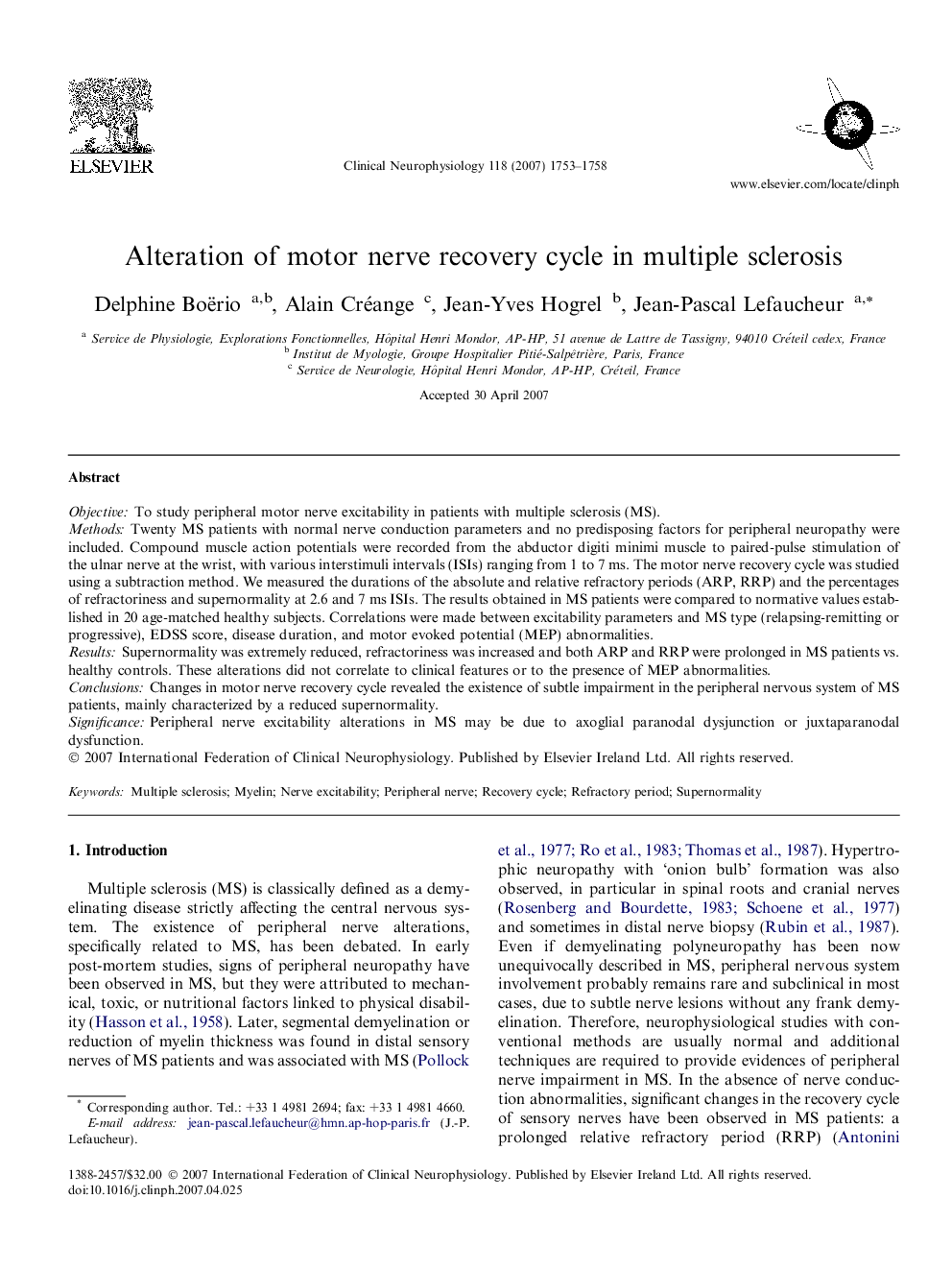| Article ID | Journal | Published Year | Pages | File Type |
|---|---|---|---|---|
| 3047782 | Clinical Neurophysiology | 2007 | 6 Pages |
ObjectiveTo study peripheral motor nerve excitability in patients with multiple sclerosis (MS).MethodsTwenty MS patients with normal nerve conduction parameters and no predisposing factors for peripheral neuropathy were included. Compound muscle action potentials were recorded from the abductor digiti minimi muscle to paired-pulse stimulation of the ulnar nerve at the wrist, with various interstimuli intervals (ISIs) ranging from 1 to 7 ms. The motor nerve recovery cycle was studied using a subtraction method. We measured the durations of the absolute and relative refractory periods (ARP, RRP) and the percentages of refractoriness and supernormality at 2.6 and 7 ms ISIs. The results obtained in MS patients were compared to normative values established in 20 age-matched healthy subjects. Correlations were made between excitability parameters and MS type (relapsing-remitting or progressive), EDSS score, disease duration, and motor evoked potential (MEP) abnormalities.ResultsSupernormality was extremely reduced, refractoriness was increased and both ARP and RRP were prolonged in MS patients vs. healthy controls. These alterations did not correlate to clinical features or to the presence of MEP abnormalities.ConclusionsChanges in motor nerve recovery cycle revealed the existence of subtle impairment in the peripheral nervous system of MS patients, mainly characterized by a reduced supernormality.SignificancePeripheral nerve excitability alterations in MS may be due to axoglial paranodal dysjunction or juxtaparanodal dysfunction.
